Last Updated on June 20, 2024 by Michelle
It was our first garden on our new homestead and we needed to learn how to deter the deer from dining on our veggies.
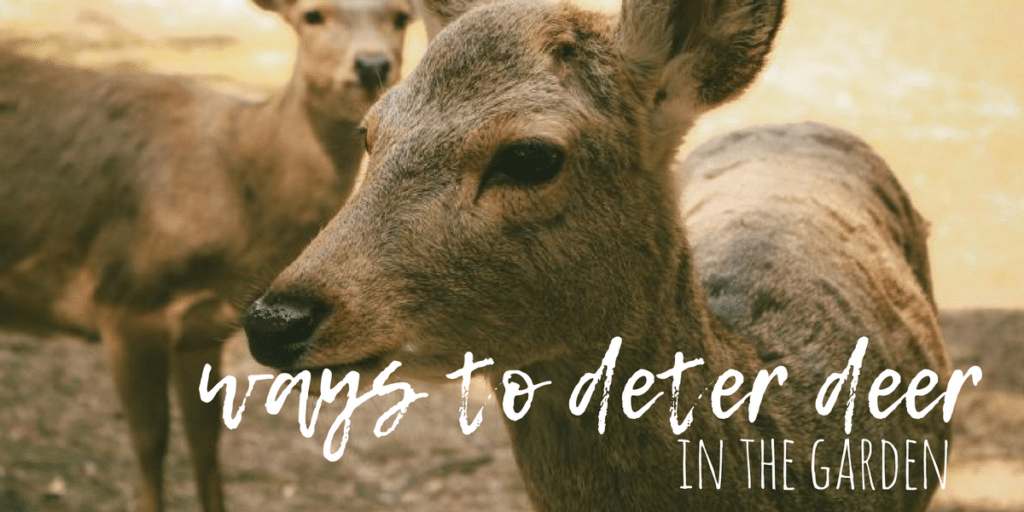
The corn was getting just tall enough to offer real promise of delicious August meals. And the tomatoes were the size of bright green golf balls, starting to show hints of pink, longings for red adulthood.
The cucumber plants were ready to reach out their tentacles and crawl along the ground because we had not yet built them a stick-and-twine trellis to dance on. That’s when our first furry pests paid a visit. With their heads low, eating the grass, and their tails laying laxly on their rumps, they felt at home. Thankfully, they were content with grass, weeds, and mushrooms for their evening meal, all of which lay at least 40 feet away from our own three garden plots of promise.
Our timid Labradoodle who longs to be a protector, but sometimes cannot overcome his fears, ran to tell the visitors they were on his property and not welcome near her gardens that she daily tends to, with him as her constant garden companion.
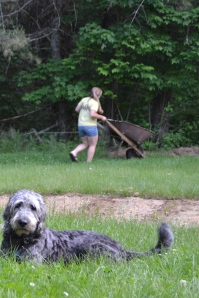
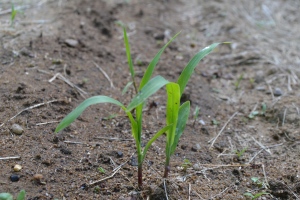
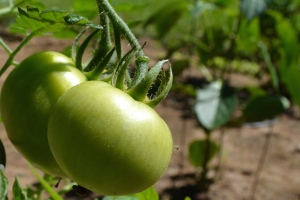
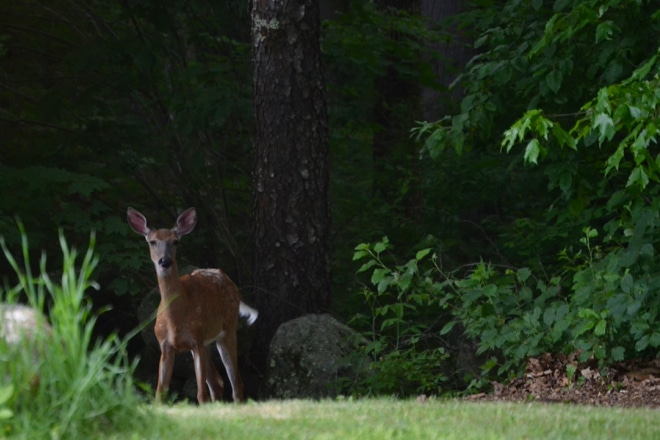
Disclosure: This post contains affiliate links.
These visitors threatened the promises to come.
But when the white-tailed deer flashed their namesake warning tails to each other and gracefully lunged into the cover of the maples and pines, our “garden guard” (yeah, not) was glad to run back to the comfort of our barn.
We have adored every new encounter with each creature that shares our 14 acres of rural New England soil, in this, our maiden summer at Restful Falls Farm. But this particular visit did not lead to excitement, partially because we had plenty of white tailed deer in our previous backyard, 400 miles south, but mainly because these visitors threatened the promises of luscious summer meals to come. So my gardener daughter started investigating how to keep these particular neighbors at bay.
How we keep deer out of our garden.
1–Use Shiny, Clanging Sentinels
She had learned a valuable trick from her grandfather, the one who had passed along the heritage of gardening to her. So we gathered tin pans, twine, and sticks, and built silver sentinel sculpture as produce protectors.
2–Plant Some Mint
She also read that deer have a great aversion to two particularly potent plants, which we happen to love: peppermint and lavender. So we trekked to town, found hearty specimens, and planted them beside our fruits and veggies. Her sister, my fellow tea aficionado, has great plans for the peppermint, plus we love the smell of it whenever we brush past it in the garden.
3–Grow Some Lavender
And the lavender adds delicate flowering beauty among the rustic tin sculpture, simple scallion grasses, and small green tomatoes. And we will dry it this fall, turning it into wonderful sachets.
4–Spray Some Repellent
Deer, like most creatures, don’t want to dine where things taste and smell nasty. So this homemade organic spray can help keep them at bay. Of course, it’s only effective if you reapply if it rains and routinely keep your plants sprayed with it (maybe setting a weekly alarm on your phone will help you remember to spray).
Take a quick second to sign up here if you’d like a copy of my free downloadable gardening books.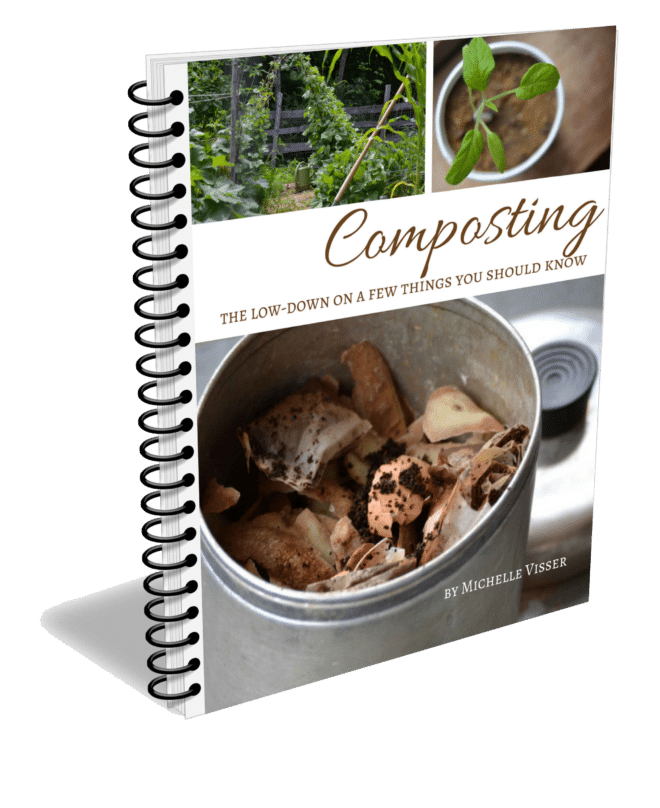
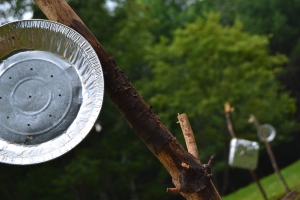
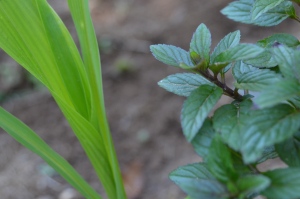

So far, we haven’t witnessed another visit. But our silver sentinels and 70-pound, 4-legged garden guard stand ready.
Thank goodness, because if we were counting on our cockapoo to help ward off the deer, Bambi would surely dine on our delicacies.
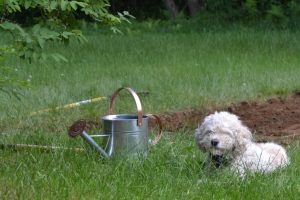
Once the protective measures were put in place, we did take time to learn a little more about the white tailed deer. First, we referred to our favorite source for all nature facts… Our Backyard Book, where the 2 older sisters had joined forces to make a page about deer many moons ago.
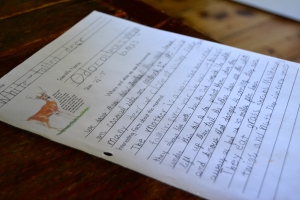
Then we referred to our favorite Field Guide for New England, which I highly recommend to all local friends.
The more we read, the less guilt we felt over refusing to share our garden bounty with the deer. Our graceful, white-tailed visitors, and all mammals who stay active in the Northeast over winter–those who face the daunting task of finding food and shelter in the often brutal New England cold–are designed marvelously by an ingenious creator God to adapt.
How deer adapt to their surroundings
* Wise dressers… The white-tailed deer has a thick coat of winter hairs that are hollow, therefore very insulating, even up to -30 degrees!
* Unfastiduous eaters… The sagacious deer change their diet based on what’s available. They feast on plants in the summer and shrubs and trees in the winter.
* Efficient engineers… While deer eat and sleep wherever they enjoy the food supply, when the snow is too deep to travel for their food, they join together in a “deer yard.” Here, under conifers or on a south-facing slope (where less snow collects), they engineer an elaborate network of trails to food, so they can avoid difficult-to-traverse, deep snow and conserve energy. In deer yards, you will see a noticeable “browse line” where the deer consume all the lower branches on all the conifers.
* Sage conservers, right down to their toes… Turns out a deer’s foot is actually two toes (that’s why their footprint looks like a heart), with their hoof being a thick toenail over the toes. Their hooves grow quickly in the summer and slowly in the winter, allowing them to conserve their energy in the cold winter months, slowing down their metabolism, right down to their heart-shaped toes.
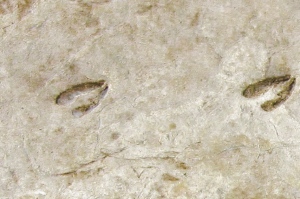
If I spot heart-shaped deer prints near our plots of produce this summer, I will not only help my gardener vamp up her protective mechanisms, but also be reminded of God’s loving provision. If God has given the deer so many ways to adapt to short-comings and difficulties, I can only imagine, with Him as my provider and strength, what He can enable me to do!
“The Sovereign Lord is my strength; he makes my feet like the feet of a deer, he enables me to tread on the heights.” Habakkak 3:19
Pin this for later!
Just click on the image below to pin this post.
Many readers often ask what camera I use to take the images you find here on SoulyRested. I love my Nikon; you can read more about my camera on my Resources page and even purchase your own here.
Glance at my Resource Page if you’d like to get a glimpse of all the supplies I use and recommend for everything from gardening, to homeschooling, to chicken care, to nature journaling, to maple syrup making.
And please follow along!
Please take a second to follow along here on SoulyRested to catch up on a few of my memorable mishaps, discover fascinating things about my centuries-old farmhouse, glean a little parenting/homeschooling insight from this momma who’s been failing at the effort for almost 2 decades, or enjoy the inside scoop on the secrets other legit homesteaders might not tell you.
I hope my focus always encourages you, because simple joys require hard work. Let’s face it, we all need all the encouragement we can get!
As soon as you subscribe (in the box at the end of this post), you’ll have immediate access to my Resource Library, which includes many useful printables–including ones about crafts and how to clean a braided wool rug–my FREE EBOOKs, and amazing recipes for things like whoopie pie cookies, maple sap switchel, and my grandmom’s perfect pie crust.
If you already ARE a subscriber, just hop over to the Resource Library here and enter your personal password. (Psssst, we always include a personalized password reminder in every Thursday email, “Hard Work, Simple Joys.”)
I’d love to connect!
To find me in some other neck of the woods, just click any (or every!) icon below:


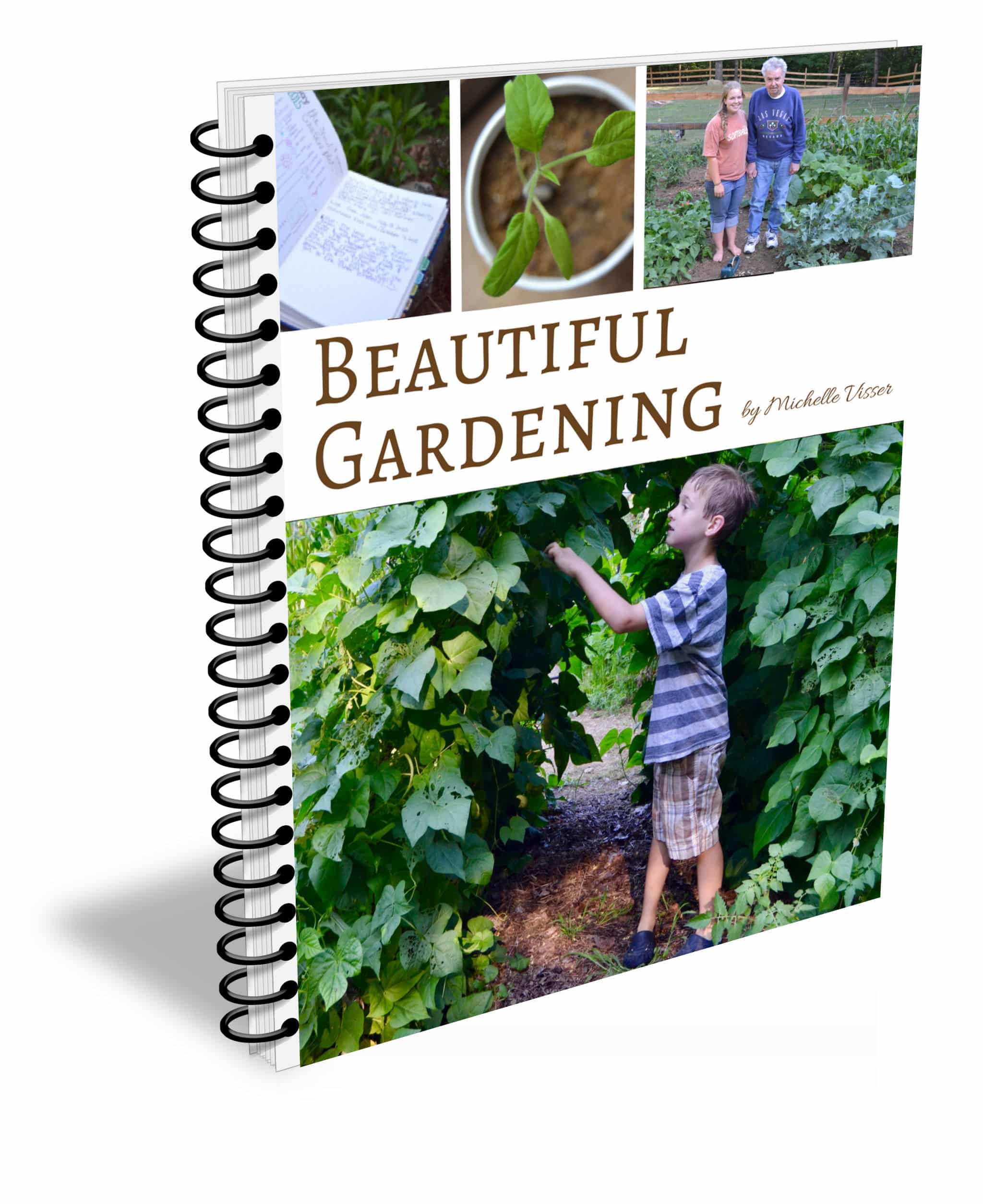
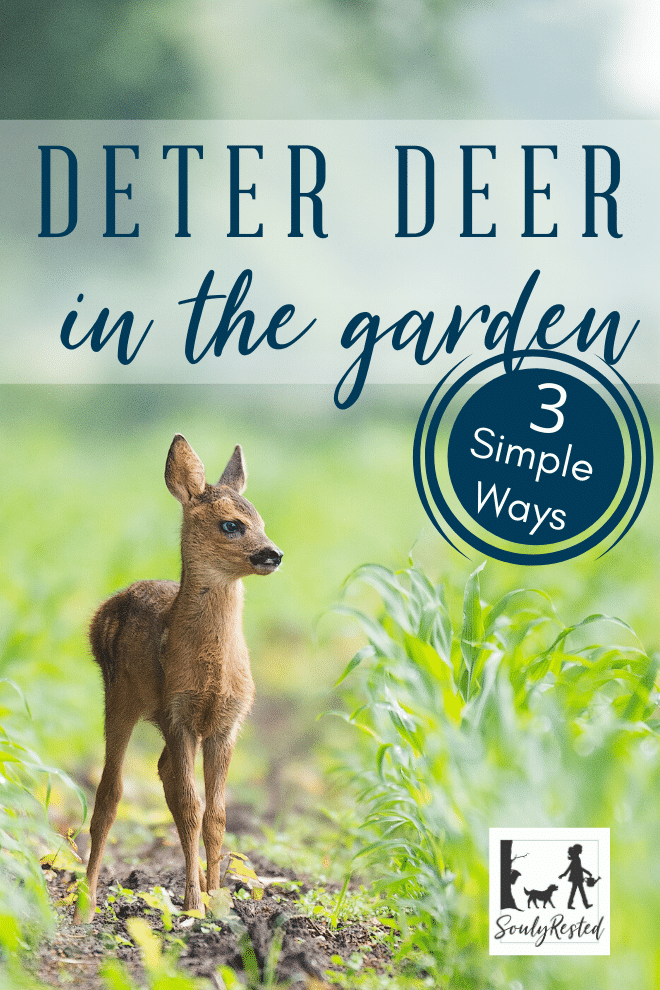





I woke up early a few weeks ago and saw a doe from my kitchen window. She was headed for my cherry trees. I hollered out the window, but she was not to be deterred. I hollered again and she raised her head, started walking towards the window, more curious than afraid. The third time I yelled, she stomped off into the woods. Good luck with your garden protection. They are also averse to the smell of a strongly scented bar of soap.
And good luck to you with your cherry protection, Laura! We hadn’t thought about the bar of soap, but we were going to tie fabric softener sheets to our tin sculptures, which I imagine is the same idea. Also read about coyote urine, but we weren’t crazy about purchasing that!
Pingback: Strawberries | souly rested